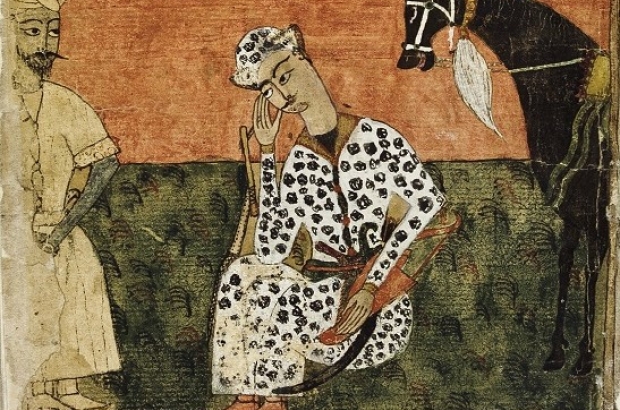- Daily & Weekly newsletters
- Buy & download The Bulletin
- Comment on our articles
Europalia Georgia: Heritage exhibition ‘A Story of Encounters’ illuminates melting pot culture
The country of Georgia - at the strategic crossroads of Asia and Europe - is once again at a critical point in its history.
After centuries of defending its interests from successive world powers, the South Caucasus nation is now firmly looking West, especially as it has finally been awarded candidate status in its aspiration to join the European Union.
The extent to which the country has adapted and reshaped to accommodate successive economic and cultural influences is the central theme of the exhibition Georgia: A Story of Encounters at the Art & History Museum in Brussels until 18 February.
Not only is it a flagship event in the multidisciplinary programme of the Europalia biennial arts festival, it’s the first widescale exhibition outside of Georgia in 100 years.
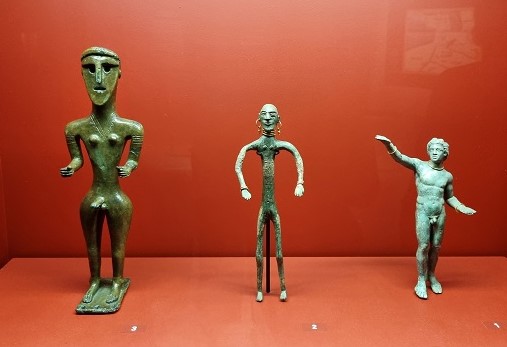
Gathering rare works from collections in Georgia and other countries, it presents an unprecedented historical context for this fascinating and often unknown nation.
Beginning with the Neolithic and stretching to the end of Georgia’s resplendent golden age, the exhibition encompasses major events and influences. For centuries, the country served as a strategic corridor between Asia and Europe, intersected by the international ‘Silk Road’ trade route.
For co-curator Professor Bernard Coulie, it was astonishing how the country maintained its own culture while being occupied or invaded by powerful neighbours. “It’s even more remarkable how these multiple influences introduced new elements into Georgian culture without ever distorting it. Paradoxically, these influences actually strengthened its culture and enabled it to express its specificity more strongly,” he added.
One of the singularities of Georgian culture was its prolific wine culture. The oldest in the world, it dates from 8,000 BC. Forming the starting point of the exhibition, visitors can discover symbolic traces of wine production, such as vine motifs and iconography on ancient steles.
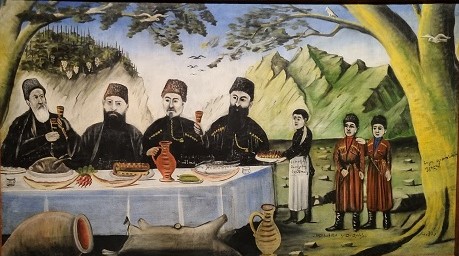
From the late 19th century are examples of Kvevris: large earthenware jugs filled with crushed grapes and buried in the ground. The ancient vinification process is now recognised by Unesco, as is Georgia’s ritualised art of dining and feasting in a tradition known as the supra. A painting by Niko Pirosmanishvili (Pirosmani), Georgia’s most famous artist, provides a colourful flavour of such a banquet (pictured).
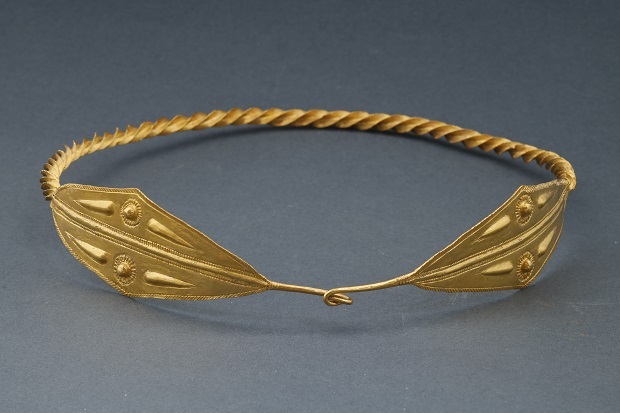
Metalwork, particularly gold and bronze, was another prominent industry, as attested by the intricate and refined gold jewellery on display (pictured). Unearthed from tombs, these were treasures of the mighty Colchis kingdom.
For the Greeks, this abundance of gold was one reason for imagining Georgia as a legendary land at the end of the world. The practice of sieving for gold by catching nuggets in the wool of upside down sheepskin lies behind the ancient myth of Jason and the Argonauts. The Greek hero was sent on a quest to the Black Sea coast of Colchis in search of the Golden Fleece.
The exhibition links this famous event with Belgium’s own Golden Fleece tradition with displays including a portrait of Philip the Good by Dutch painter Van der Weyden. Inspired by the Greek myth, the Burgundian duke created the important chivalrous order in 1437 to celebrate his marriage to Isabella of Portugal.
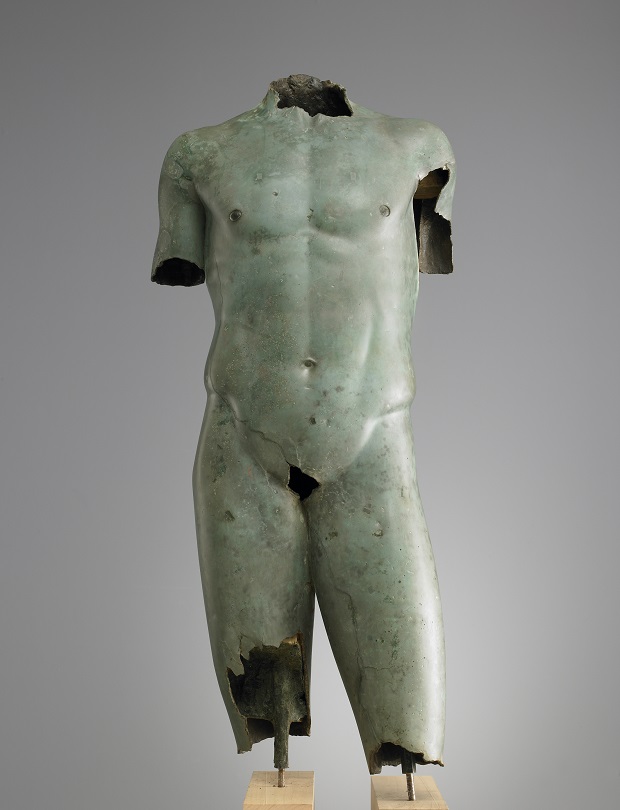
It was not only Greek civilisation that established trading posts on Georgian soil. Others leaving their indelible trace on its politics, fortune and culture were Romans, Persians, Arabs, Byzantines, Mongols and Ottomans.
A variety of artefacts reveal the influence of these empires on a feudal Georgia that was divided into two kingdoms, Colchis and Iberia. Medallions, panels and other objects feature conflicting symbols from these various powers.
In the 4th century, the country converted to Christianity. Religion was a unifying force, which led to the development of Georgia’s dialect into a distinct official language. Examples of its unique alphabet appear in written texts in manuscripts and on stone.
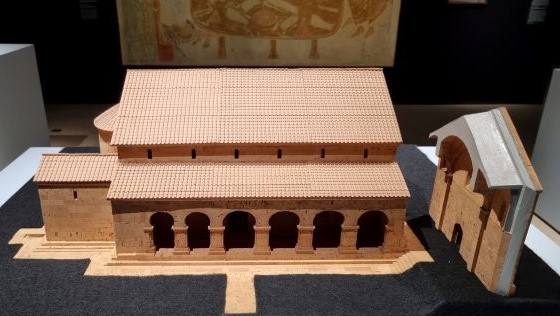
Original cork models of early churches are rare works in themselves. The oldest is of the 5th century Bolnissi basilica-style church (pictured), which remains in use. Other maquettes show how the crucifix form became the dominant architectural style from 600.
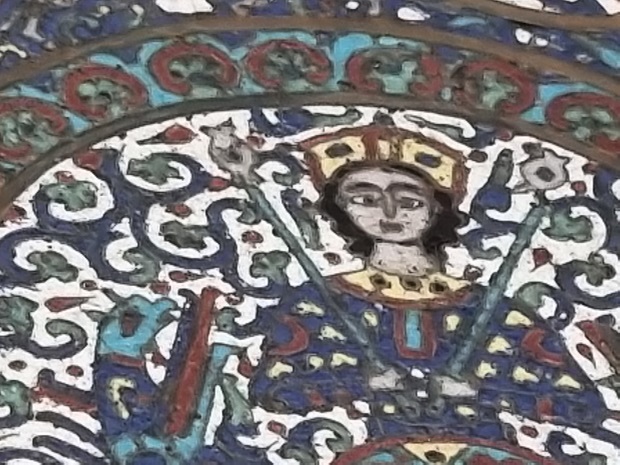
A magnificent 12th century enamel and copper plate, dedicated to Rukn al-Dawla Dawud, is a highly rare piece. The only medieval enamel work in the Byzantine tradition to bear the name of a Muslim ruler, it also celebrates the ascension of the Macedonian king Alexander the Great (pictured).
From the 17th century, the Arab world began to replace Iranian power. Georgia’s survival depended on its capacity to strike accords with warring neighbours. One example is a stone tableaux triptych depicting one of the country’s princes in Iranian dress, while Greek symbols appear in other features.
A display of small coins is of particular significance. On one side is the Christian Georgian king from the Middle Ages, on the other is writing in Arabic. To be accepted on the international market, the currency had to bear the language of the Islamic world.
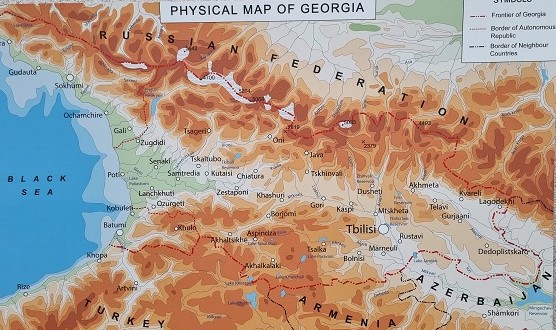
It was this capacity to assimilate foreign influences that helped to forge the creativity and technical prowess of Georgian culture. Today, with the country recovering from Soviet invasion in 1921 and ongoing occupation of its Abkhazia and South Ossetia regions, it takes pride in its past, its resourcefulness and singular history.
Offering a contemporary perspective of Georgia within the exhibition is the specially-commissioned documentary film A Thousand Times They Say by Ingel Vaikia and Sakis Brönnimann. The atmospheric work is a sensory experience as it travels around the country, focusing on sound and gesture. Although it has no dialogue, its soundtrack of traditional orthodox chants evocatively accompanies visitors around the displays.
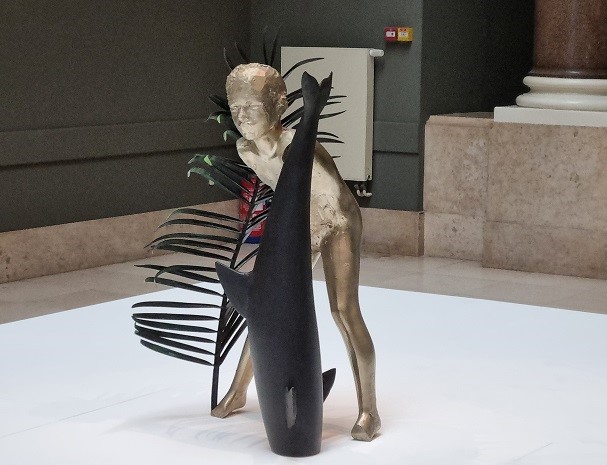
In a separate space, the contemporary show Stranger in Paradise by Andro Wekua consists of three installations exploring the melancholy and elusiveness of his family’s migrant experience. Neon lighting, a statue adorned with a dolphin and marine vegetation (pictured), plus a seabed relief, are all reminiscent of a lingering sense of longing by this prominent artist within the Georgian diaspora.
Georgia: A Story of Encounters
Until 18 February
Art & History Museum
Cinquantenaire Park
Brussels
Photos: (main image) Shota Rustaveli “The Man in the Panther’s Skin”, 1646; Copyist and illustrator Mamuka Tavakarashvili © National Center of ManuscriptsGold jewellery © Diadem, 5thc BC, Sairkhe Fine Arts Musuem; Torso of a young man, Colchis, 200-100 BC, Georgian National Museum ©Robb Harrel, Arthur M Sackler Gallery, Smithsonian Institution












